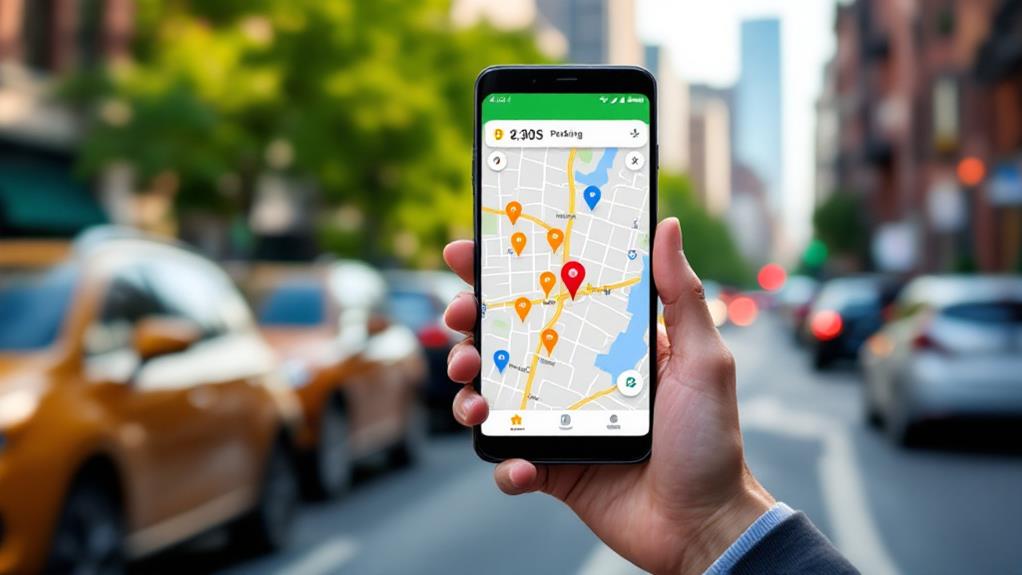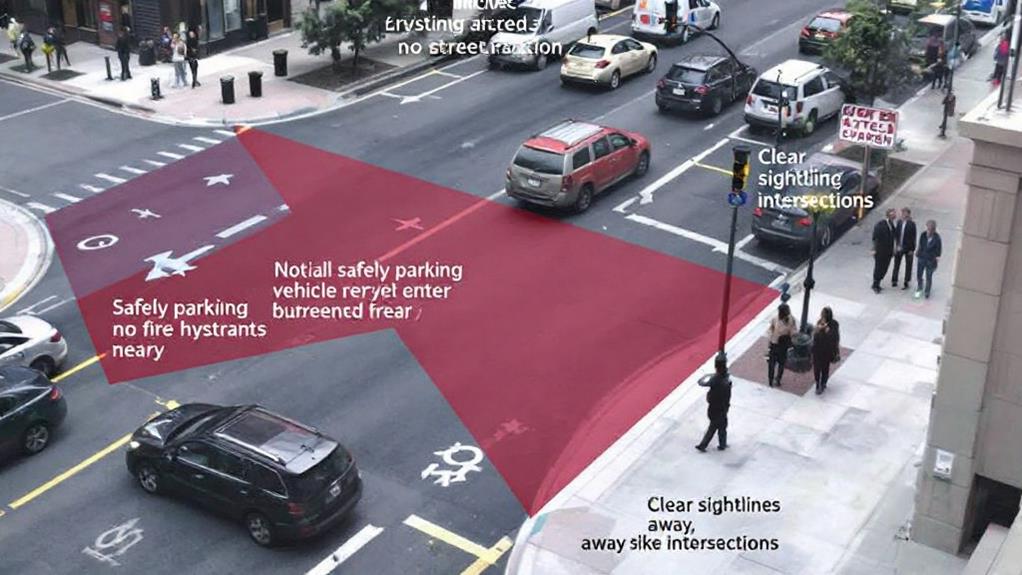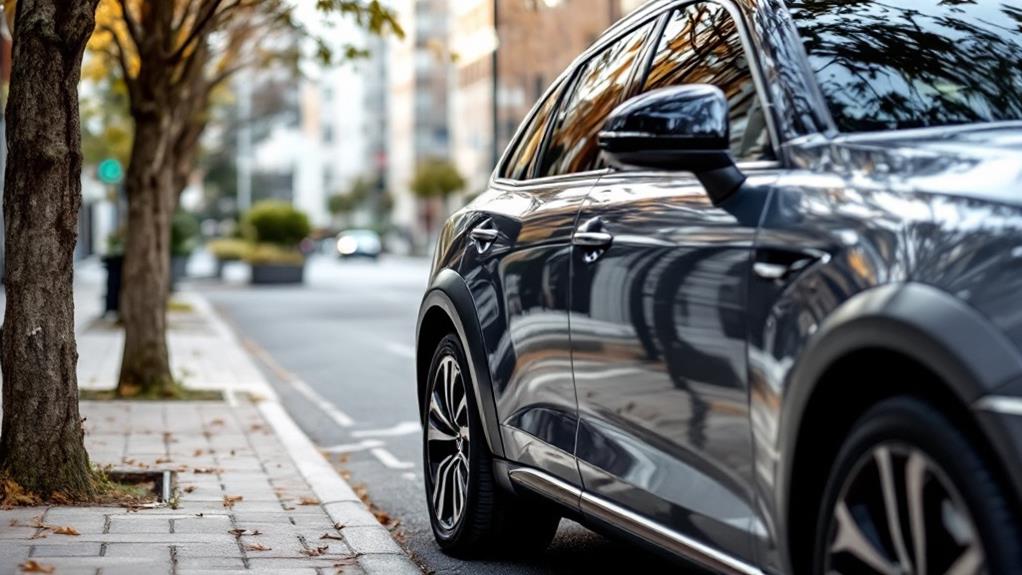Street Parking Strategies for Compact and Large Vehicles

When street parking, your vehicle size matters. For compact cars, you'll have more flexibility in tight spots and can often squeeze into smaller spaces. Larger vehicles like SUVs and trucks require more careful maneuvering and extra space. Always assess the parking spot size before attempting to park. For parallel parking, position your vehicle parallel to the car in front, about 2-3 feet away. Use your mirrors and backup camera to gauge distance from the curb. Remember, compact cars have an advantage in angled parking, while larger vehicles may need to back in for better visibility. Perfecting these strategies will make your urban parking experience smoother and safer.
Vehicle Size Assessment
When it comes to street parking, understanding your vehicle's size is essential. Compact cars typically measure 12 to 16 feet long and 5 to 7 feet wide, while larger vehicles like SUVs and pickup trucks can stretch up to 18 feet in length and 7 feet across. Knowing these dimensions is imperative for finding suitable parking spots and maneuvering your vehicle safely.
To assess your vehicle's size, familiarize yourself with its length, width, and turning radius. This knowledge will help you gauge the distance needed between your car and others when parallel parking or pulling into a spot. Larger vehicles require more space to turn and position, so you'll need to be extra cautious when searching for a parking space.
Choosing the Right Parking Spot
Selecting an appropriate parking spot is imperative for a stress-free parking experience. When looking for a parking spot, you'll want to consider your vehicle's size and maneuverability. For compact cars, seek out spaces marked specifically for smaller sized cars. These spots maximize the use of available parking and are often easier to navigate.
If you're driving a larger vehicle, look for parking spaces that offer ample room for turning and maneuvering. Avoid tight spots that might make it difficult to park or exit. Always check the dimensions of the parking spot to guarantee your vehicle fits comfortably without encroaching on adjacent spaces or obstructing traffic flow.
Be aware of local parking regulations, as some areas have specific requirements for different vehicle types. The type of parking you choose should align with your vehicle's characteristics. For instance, parallel parking might be challenging for larger vehicles, while angled parking could be more suitable.
Remember to assess the available parking options before committing to a spot. By choosing the right parking space for your vehicle, you'll guarantee a smoother parking process and avoid potential issues or violations.
Parallel Parking Techniques
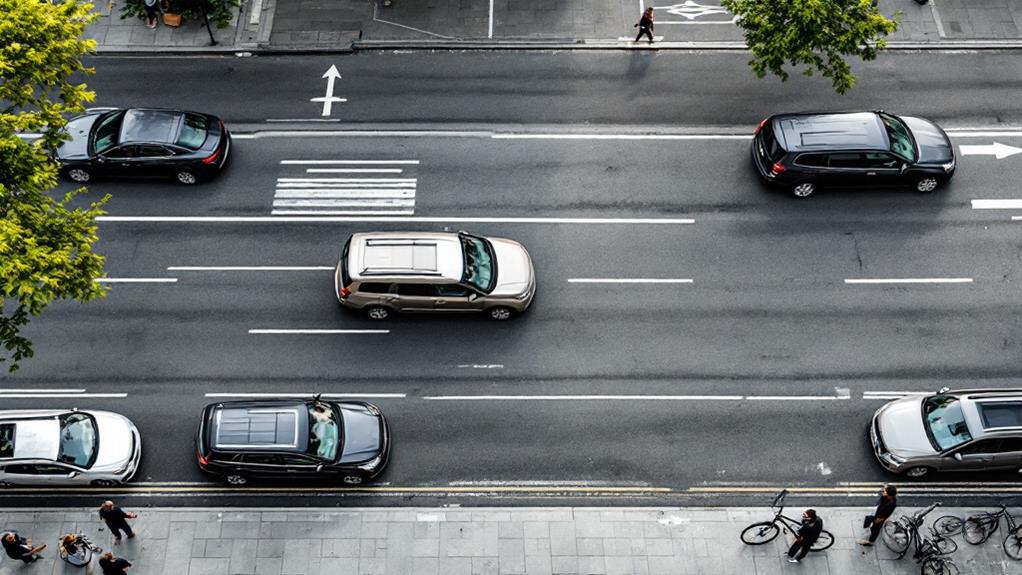
Perfecting parallel parking can be an expert experience for urban drivers. Whether you're maneuvering a compact car or a larger vehicle, conquering this skill is essential for navigating city streets. To parallel park effectively, you'll need a space about 5 feet longer than your vehicle, plus an extra 4 feet for maneuvering.
Begin by positioning your car parallel to the vehicle in front of the spot, roughly 2-3 feet away. As you reverse, turn your wheels sharply towards the curb. Use your side mirrors and back-up camera to gauge your distance from the curb and align your vehicle within the parking space.
For larger vehicles, follow these steps to minimize potential damage:
- Pull ahead past the spot
- Straighten your wheels
- Reverse slowly
- Adjust steering to center your vehicle
Compact cars can take advantage of their smaller size by angling in closer to the curb during the maneuver. This technique allows for easier entry into tighter spaces. Remember, practice makes perfect, and with time, you'll develop the confidence to parallel park in even the most challenging urban environments.
Angled Parking Tips
While parallel parking requires finesse, angled parking offers a more straightforward approach to street parking. When you encounter angled parking spaces, you'll find they're well-suited for parking lots with reliable one-way traffic patterns. These spots typically require a minimum aisle width of 14 feet, but if you're driving a compact car, you might encounter narrower 9-10 feet aisles.
As you approach an angled parking space, align your vehicle with the spot lines. You'll notice that the dimensions of these spots are the same as standard straight parking spaces. Slowly pull into the spot, keeping an eye on either side to avoid hitting adjacent vehicles. The angled design provides better visibility when entering and exiting the parking spot, making it easier to maneuver your vehicle.
Remember that angled parking is designed for one-way traffic flow. Always follow the designated traffic direction in the parking lot. When leaving your spot, be cautious of oncoming vehicles in the aisle. By following these tips, you'll find angled parking to be a convenient and efficient way to park your vehicle in urban areas.
Backing In vs. Front-End Parking
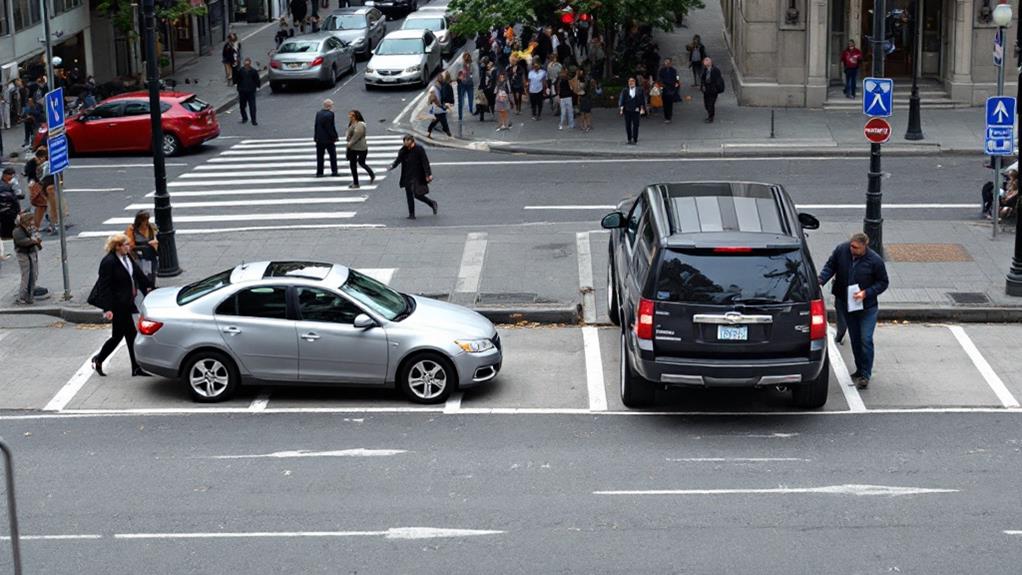
When it comes to street parking, you'll often face a choice between backing in and front-end parking. Your decision should depend on factors like vehicle size, parking space dimensions, and traffic flow.
For compact cars, front-end parking is usually the preferred option. It's quicker and easier to enter the parking space, and the smaller size makes it less challenging to reverse out when leaving. However, if you're driving a larger vehicle like trucks and SUVs, backing in might be your best bet. It provides better visibility when exiting and allows you to pull out forward, which is especially helpful in busy areas.
Consider these parking options:
- Back into a parallel spot for better control and visibility
- Pull forward into angled spaces for quicker entry
- Reverse into perpendicular spots for easier exit
- Use front-end parking for compact cars in tight spaces
Maneuvering in Tight Spaces
Once you've decided on your parking approach, the real challenge often lies in maneuvering your vehicle into tight spaces. To maximize your chances of success, approach the parking space at a shallow angle. This technique provides you with more room to work with and allows for better positioning.
As you enter the space, use your vehicle's size to your advantage. If you're driving a compact car, you can position it closer to other vehicles without risking damage. For larger vehicles, you'll need to be more cautious and precise in your movements.
Employ the three-point turn technique to straighten and center your vehicle within the space. This method involves making a series of small adjustments to achieve the perfect position. Throughout the maneuver, continuously monitor your vehicle's position and make necessary adjustments to avoid encroaching on adjacent spots.
Don't forget to communicate with nearby pedestrians and drivers to guarantee everyone's safety during the parking process. Use your turn signals, hand gestures, or even roll down your window to indicate your intentions. By following these strategies, you'll be able to navigate even the tightest parking spaces with confidence and skill.
Safety Precautions and Considerations
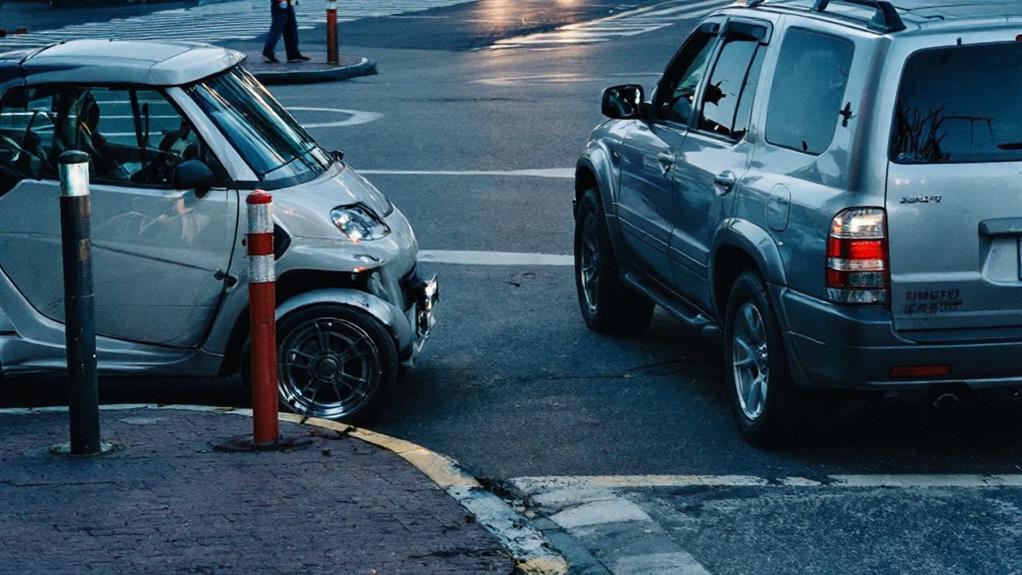
Safety should be your top priority when parking on the street. Always check your mirrors and blind spots before exiting your vehicle to avoid collisions with passing traffic or cyclists. When parallel parking, use your turn signals to alert other drivers of your intentions, ensuring a smoother and safer parking process.
Be mindful of narrow streets and tight spaces that may not accommodate larger vehicles. To make sure you're parking legally and avoiding tickets, obey all parking signs and regulations. Park as close to the curb as possible to maximize available space for other vehicles and improve overall street safety.
For better parking and safety, visualize these key steps:
- Scan the area for potential hazards, such as approaching cars or pedestrians
- Signal your intentions and slowly approach the parking space
- Position your vehicle parallel to the car in front, leaving about 2 feet of space
- Turn the wheel sharply and back into the space, adjusting as needed
